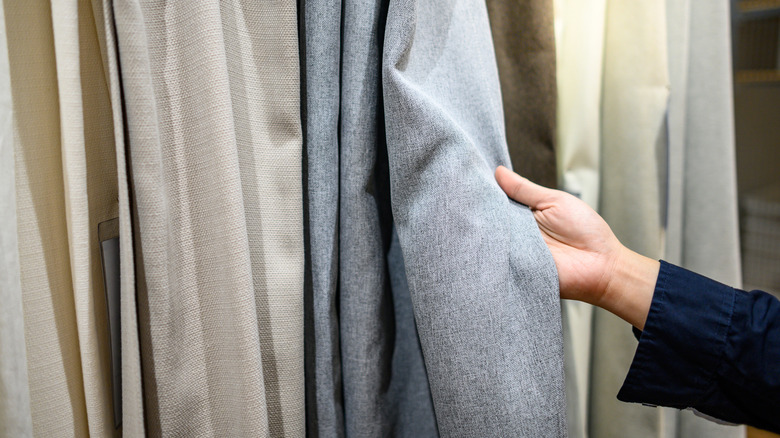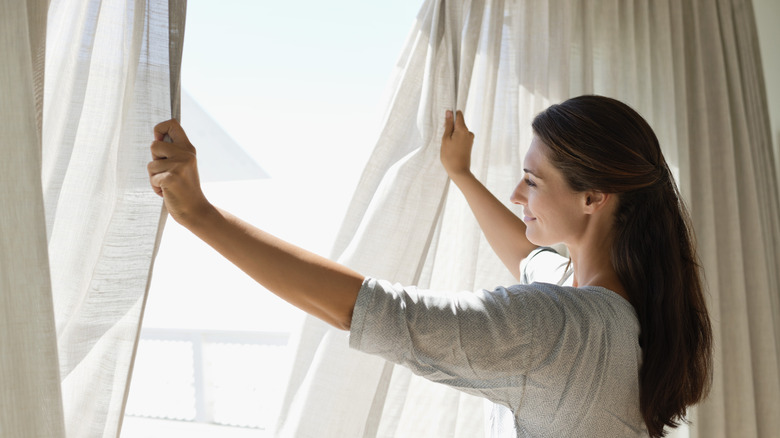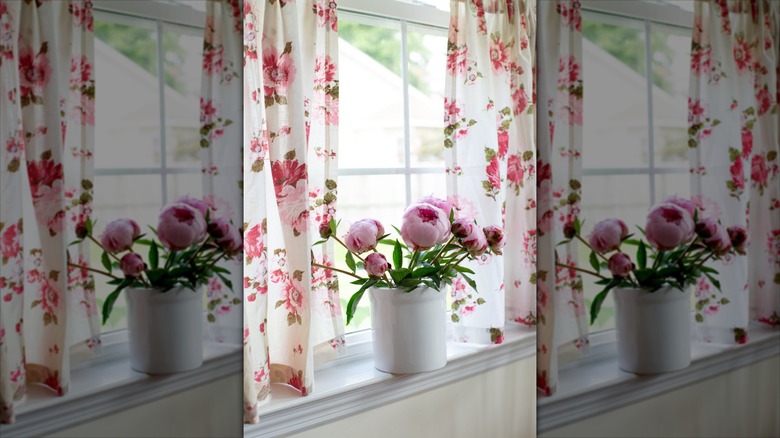Linen Vs Cotton Curtains: How To Choose A Style For Your Home
We may receive a commission on purchases made from links.
Shopping for new curtains is all fun and games until you're faced with a bunch of options. And we're not just talking about colors and designs here. The choice of material can be equally overwhelming to narrow down. So, to make things less daunting, we'll start with the two most sustainable fabric options for curtains: linen and cotton. They're both naturally sourced, soft to the touch, and complement a variety of interior styles, whether modern or traditional. Which begs the question: What sets linen and cotton apart? The answer ultimately lies in their durability, maintenance, and insulation properties, to list a few. Say you live in a hot climate and want breezy curtains to keep the room cool. Linen is the go-to. But if easy cleaning is a priority (because dust!), you can't beat cotton drapes.
Essentially, linen comes from the fibers of flax, a long and slender perennial with typically blue flowers. Once harvested, retted, and spun, the flax fibers turn into the slightly textured, rumpled fabric that we all know and love. Cotton is processed in a similar way, but derived from fluffy cotton plants instead. This explains its gentle, supple feel.
What sets linen curtains apart
Linen takes the crown when it comes to durability. This textile is even said to be up to three times stronger than cotton. Hence, linen curtains can last for many years before showing signs of wear and tear — if cared for properly. Note that linen can shrink in the dryer and washer on the wrong settings. Done right, though, and the window coverings get softer and softer after every wash.
This fabric is much more resistant than most would assume. It's allergy-friendly, meaning your drapes are less likely to attract dust mites, pet dander, and other nasty allergens. On a similar note, linen doesn't hold on to moisture and dries rather fast. This makes it ideal for humid homes. And, of course, we can't forget about its insulating properties. Lightweight linen curtains, in particular, have an airy woven structure that not only lets in soft, natural light, but also prevents heat buildup and promotes airflow when it's hot out. Alternatively, heavier linens offer greater privacy while keeping interiors less drafty come wintertime. All you need to do is pick a weight based on your climate and preferences.
Considering all the benefits, it's no wonder linen is one of the most popular curtain materials. But there's a catch: these tend to be more expensive (or at least the pure ones). Take the Solino Home 100% European Flax Linen Curtain, for example, which costs around $90 for one panel. If that's not in the budget but your heart's set on the look of linen, consider something made from linen blend fabric (often costing as little as $20, but not as durable and breathable as 100% linen).
Choose cotton for style, practicality, and affordability
Machine washable? Check. Less prone to wrinkles? Check. Better light filtering? Double check. It really doesn't get better than cotton curtains in terms of practicality. Better yet, these types of curtains are available in an extensive range of colors, patterns, and thicknesses — all at budget-friendly price points. There are vibrant solids, playful floral prints, ombré sheers, and also super effective blackout designs, depending on what you're looking for. The INK+IVY Imani 100% Cotton Curtains for $39.47 is but one high-rated example.
Similar to linen, cotton curtains are hypoallergenic and somewhat breathable, too. But unfortunately, it's also one of those fabrics that shrink in the laundry, and it isn't UV-resistant like its counterpart. So yes, there's a high chance your bright cotton window treatments will fade and weaken with prolonged sun exposure. That is, unless you add a lining to your curtains or install UV-protection films on the windows to protect the fabric (plus other furnishings) from sun damage.


